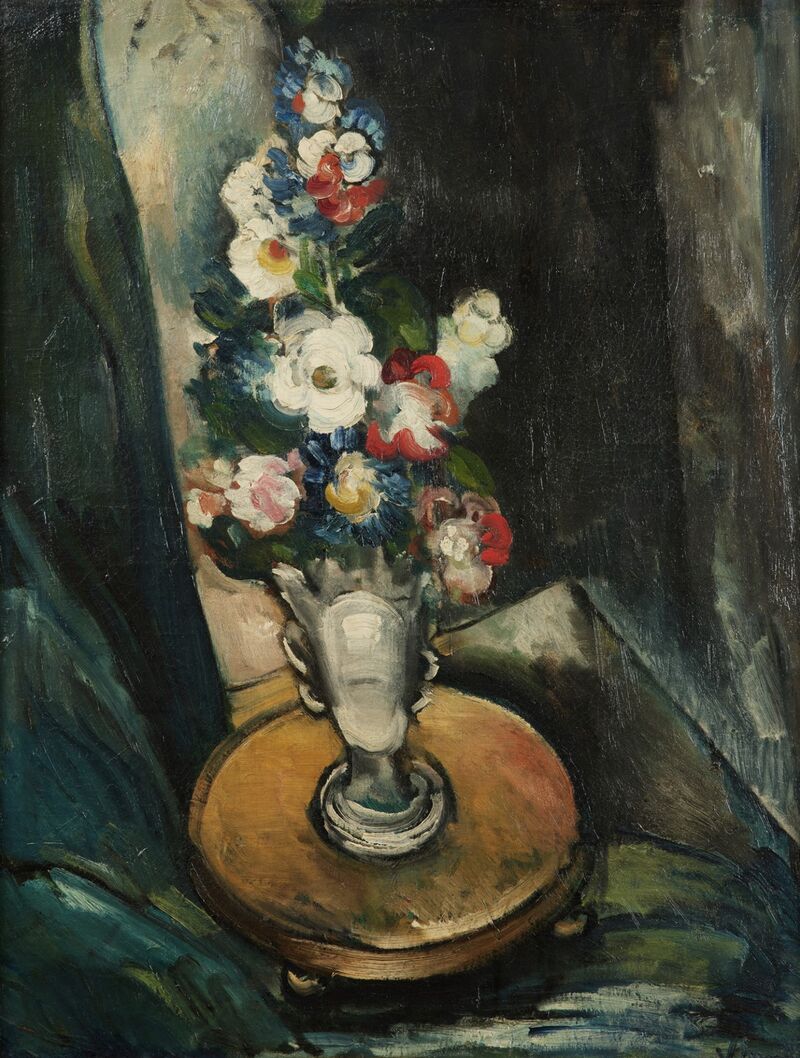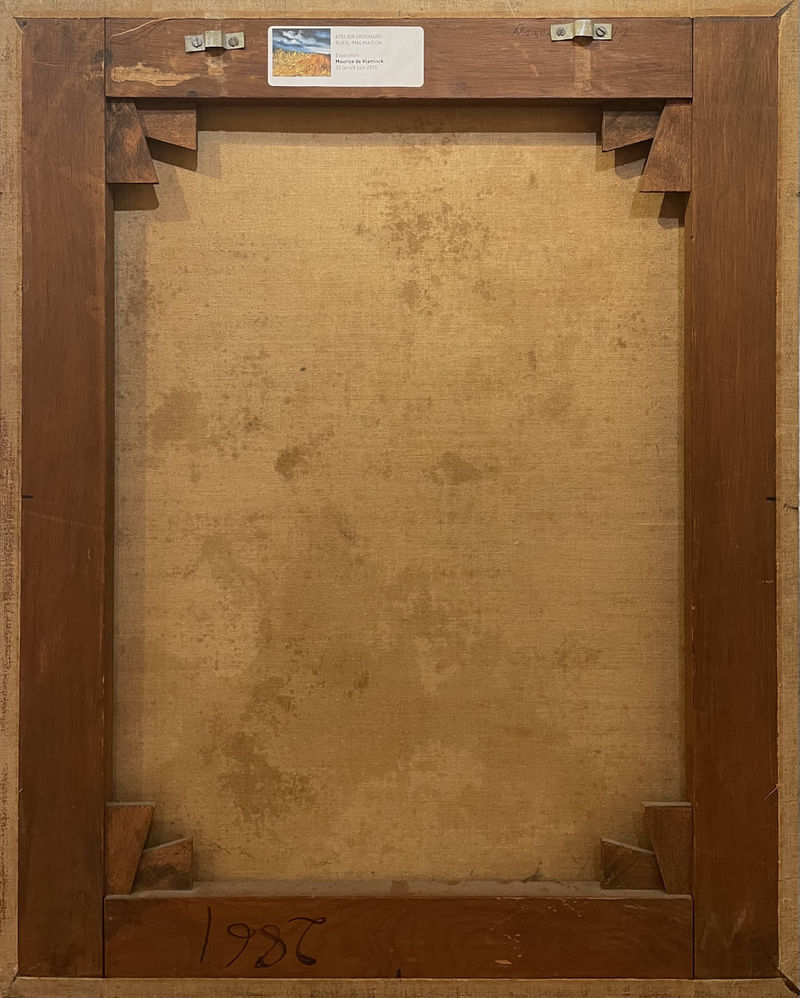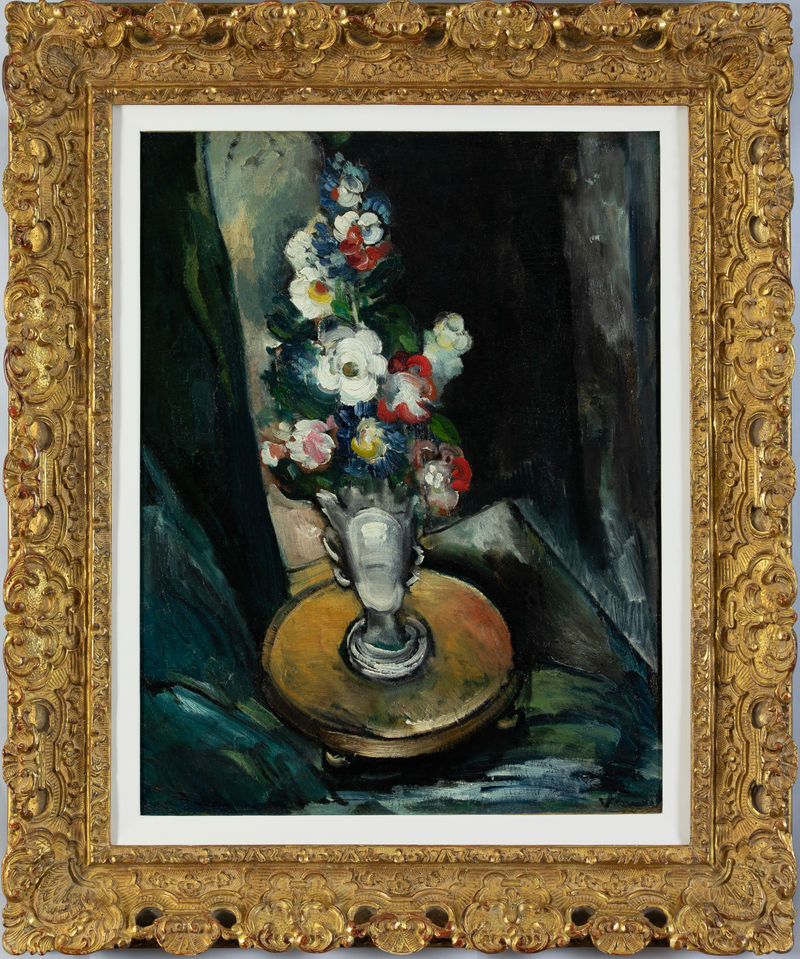Maurice de Vlaminck
(French, 1876-1958)
Le Guéridon au Vase de Fleurs
1914-15
oil on canvas
64 x 51.5 cm (25¼ x 20¼ in.)
signed 'Vlaminck' (lower right)
Floralies, Versailles, 1977
Rueil Malmaison, Maurice de Vlaminck, 1876-1958, 2015, p. 89
This work is accompanied by a certificate from Paul Pétridès dated 20th December 1976 and a certificate from the Wildenstein Institute dated 1st February 2001.
The work will be included in the “Vlaminck Archives” created at the initiative of Madame Godelieve de Vlaminck, in collaboration with Madame Pascale Krausz.
Vlaminck gained notoriety as an artist when he exhibited at the Salon d'Automne in 1905. The critic Louis Vauxcelles had seen a small Florentine-style sculpture surrounded by the work of Camoin, Derain, Marquet, Matisse, and Vlaminck in room 7, and wrote that it was like seeing a Donatello surrounded by wild beasts, or Fauves. These artists thrived to advance upon the experimentation with colour and the simplification of forms that their Post-Impressionist predecessors had adopted in their practice. The resulting products were shocking counterparts for their unconventional dynamism and liveliness in the brushwork. Colour, in short, was completely set free and moved from a vehicle of naturalistic representation to a mode of emotive expression.
Strongly influenced by van Gogh, whom he venerated, Vlaminck's Fauve canvases were stridently coloured and boldly executed to such an extent that in 1907—the year of his first solo exhibition at the Galerie Vollard—he was christened "the wildest of the Fauves." Shortly afterwards, however, Vlaminck would abandon the excesses of his Fauve manner in favour of a more subdued approach, strongly influenced by Cézanne. The master of Aix was, of course, a major source of inspiration for many artists at the time. Rather than follow Cézanne's innovations to their logical conclusions, Vlaminck used Cézanne's example as a restraining device, reigning in the gestural audacities and colouristic excesses of his Fauve years. Painted at this very moment, the present picture is a transitional work, highlighting the vibrancy of the artist's Fauve palette in the colourful flower buds against a muted ‘Cézannian’ backdrop.
Painted in 1914-15, Le Guéridon au Vase de Fleurs is a powerful example of the continued importance of the traditional still-life within Vlaminck’s oeuvre, during the most radical stages of his career. Acting as a vehicle for experimentation and research through which he could explore new directions in his painterly aesthetic, the still-life procured particular importance for the artist as he began to feel that he had reached the limits of his use of pure, explosive colour as the primary means of expression in his work.
Price:
£60,000 (+5% import VAT)
More artworks by Maurice de Vlaminck ▶
You may also like:
Enquire Now
Fill in the form below and we will respond as soon as possible.
Make an offer
Fill in the form below and we will respond as soon as possible.



